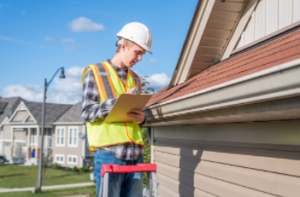Building and pest inspections are essential when purchasing or selling property, saving both parties time and money in the long run.
Spending a few hundred dollars for a building and pest inspection might seem unnecessary, but doing so could save thousands in repairs.
 Inspection of the Exterior
Inspection of the Exterior
Professional Bayside building and pests inspections typically conduct this kind of inspection. They typically belong to an association and carry Errors and Omissions Insurance to protect against claims. An inspector typically begins by inspecting wall coverings, trim (around doors and windows) for signs of rot, denting, paint bubbling, rust and satisfactory clearance between wood siding materials and soil (typically at least 6″).
An exterior inspection of a building involves taking pictures and documenting its condition from various vantage points, such as garages, sheds and fences. An inspector will typically take shots from various distances and close-up images for any issues discovered during an exterior inspection.
Inspectors typically examine roofs to search for missing or loose shingles and inspect gutters, downspouts and flashing. Additionally, they’ll check whether septic systems were correctly installed and whether the tank has an attached lid and remains in good condition.
After Hurricane Ida and the COVID-19 national emergency, FEMA conducts initial exterior home inspections to help survivors determine eligibility for Other Needs Assistance (ONA). Any liabilities discovered could lead to higher premiums or even policy cancellation.
Inspection of the Interior
Pest inspections, also called termite or wood-destroying organism (WDO) inspections, occur inside the home and focus on areas most susceptible to insect infestation. While regular home inspections examine major property structures, pest inspections look for signs of insect activity and conditions that make a property inviting for insects or other forms of pests.
Pest inspectors usually begin by performing an initial sweep through your floorboards, baseboards, walls, doors, and windows to detect signs of pests such as droppings or chewed wires from pests such as rodents. Furthermore, some inspectors use special instruments to detect moisture issues that cannot be seen with the naked eye.
Pests prefer damp environments like crawl spaces, attics and basements for their nesting purposes, especially termites, powder post beetles or carpenter ants. Pests will look out for signs of termites, powder post beetles or carpenter ants, door and window frames, furniture and any other wooden components of the home that might harbour these insects. Furthermore, subterranean termites may cause water-related damage in homes, so inspection should also include plumbing penetrations, as they can do their damage in this regard.
Pest inspections typically last 30 minutes; however, larger homes with many attics or basements may take longer because all their vulnerable spots are covered during an inspection. Once completed, a comprehensive report with recommendations will be sent directly to you outlining any problems found and how they can be mitigated.
Inspection of the Roof
Roofs may appear passive components of homes, but they’re complex working systems designed to shed rain and snow, repel pests from entering, protect against wind and sun exposure and protect the inside from extreme temperatures. Regular inspection is important for it to continue functioning optimally.
Professional roof inspections can detect early warnings of roof problems that might otherwise remain invisible until the damage becomes obvious in interior walls and ceilings, saving money and potentially hazardous structural leaks that put residents of homes at risk.
An inspector will also examine the slope of your roof, looking for signs that indicate it’s not draining water or snow as expected. Furthermore, they’ll assess any areas where your roof meets walls in your house for moisture, condensation and improper ventilation that might lead to costly damage over time.
Inspection of the Ground
Building and pest inspections provide a great opportunity to assess whether the soil has come too close to contacting the foundation, making wood-destroying insects more likely. An inspector can detect problems; however, any real damage might not become evident until after termite treatment.
At the inspection, your inspector will take pictures inside and outside your home to help highlight important points in their report.
Inspectors will refrain from engaging in activities that could be dangerous, unsafe, or cause property damage – this includes walking on roof surfaces, climbing ladders or entering attics.


